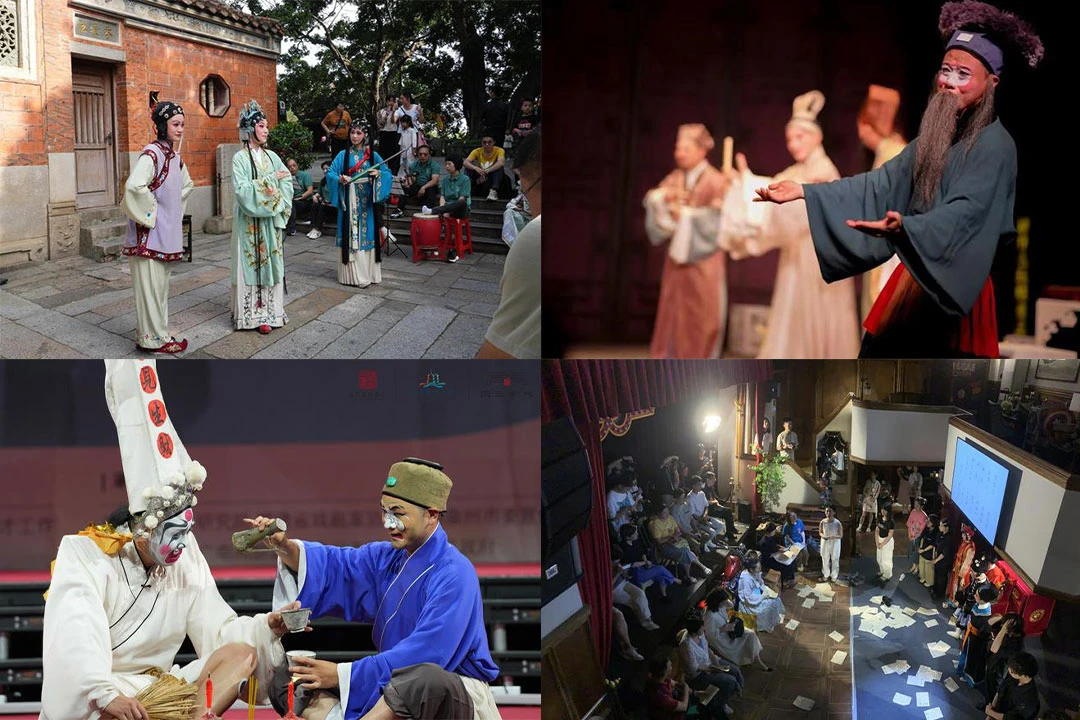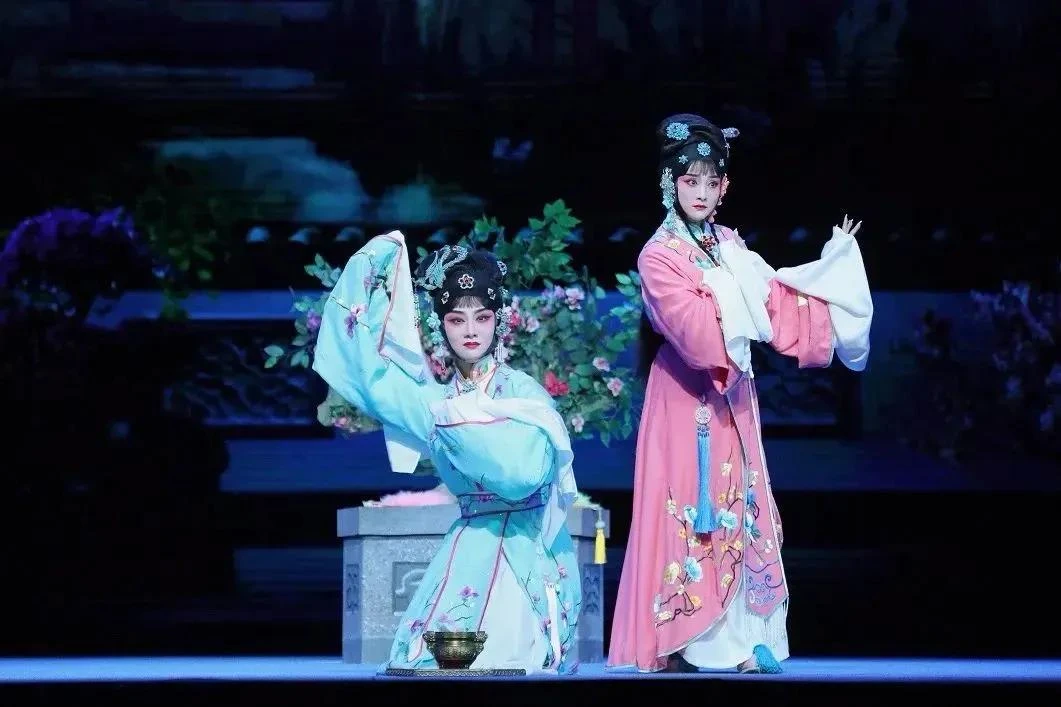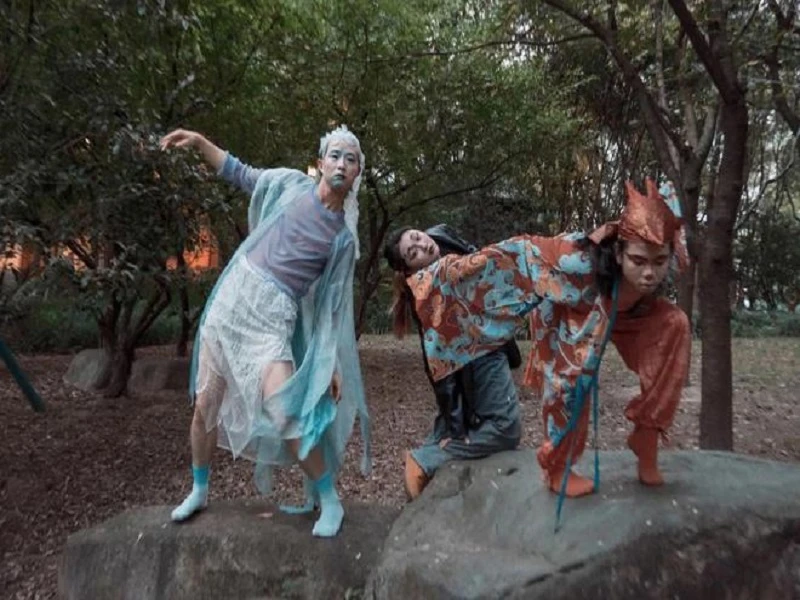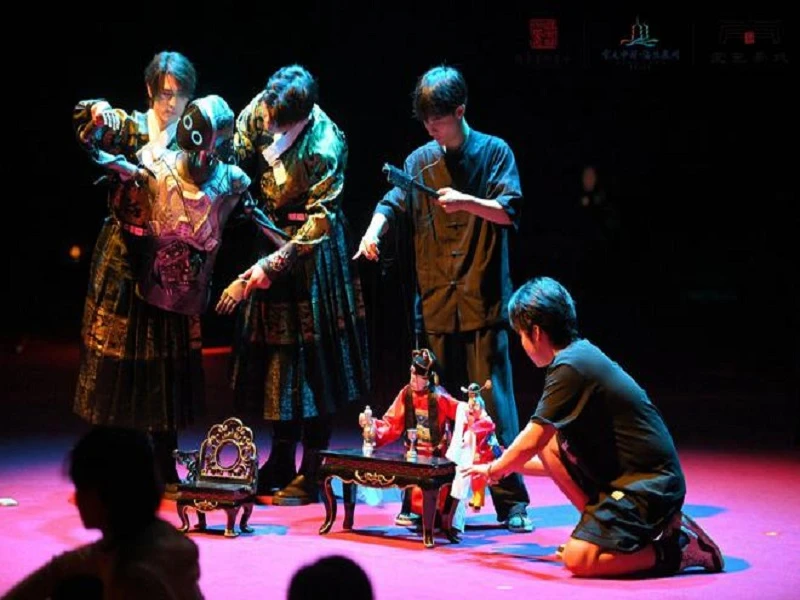In the heart of Quanzhou, a city rich with history, a unique convergence of old and new took place this summer. On the terrace of the historic Liyuan Classical Theater, a group of young theater enthusiasts from all over the country gathered to share their work and discuss their creative processes. Despite the stormy weather brought by Typhoon Gemi, the energy inside remained high as these passionate individuals made last-minute changes to their performances, eager to present their creations. This scene was the culmination of months of preparation, leading up to the "Maritime Silk Road New Space (海丝新空间)" drama incubation program's showcase of six original works at the end of July.
This enthusiasm for drama is not new to Quanzhou. Just three months prior, the same terrace hosted 16 esteemed artists from China's opera scene, including three who had won the prestigious Plum Blossom Award twice. These artists, representing over ten ancient and rare forms of Chinese opera, gathered for a one-of-a-kind post-performance salon that lasted deep into the night. This gathering of seasoned artists was part of the larger "Second Quanzhou Southern Drama Week and 2024 National Southern Opera Exhibition," a grand event that spread throughout the ancient city from April to July.

A City Alive with History and Drama
Quanzhou's rich heritage served as the perfect backdrop for this festival. Throughout the city, in locations like the Sutinyu Residence, the Maritime Museum, the Zhenwu Temple, and the Bo Le Theater, echoes of Southern Drama, or "Nanxi (南戏)," from the Song and Yuan dynasties could be heard. This ancient form of drama, once forgotten, was brought back to life in the very city where it thrived centuries ago.
The revival of Nanxi has garnered significant attention, with institutions like the China National Academy of Arts, the China Theater Association, and the Fujian Provincial Department of Culture and Tourism collaborating to organize this grand event. This year's edition expanded even further, with 21 theater troupes from eight provinces presenting 19 rare and ancient drama forms, and experts and scholars from across the country engaging in discussions and forums.
One of the driving forces behind this resurgence is Zeng Jingping, a renowned Liyuan opera artist and two-time Plum Blossom Award winner. Liyuan opera, with its 800-year history, is often referred to as the "living fossil" of Song and Yuan dynasty Southern Drama. Zeng's mission is to explore all the possibilities within Chinese opera and Nanxi, seeking new paths for the preservation, inheritance, and development of these ancient art forms.
A Grand Showcase of Rare Opera Styles
The inaugural Southern Opera Exhibition held last year in Quanzhou offered a rare glimpse into numerous Nanxi operas and ancient drama forms, some of which had not been performed for decades. This year, the event grew even larger, with 19 different opera styles, including Liyuan opera, string puppet shows, Southern music, and Puxian opera from Quanzhou, as well as Chao opera, Yiyang tunes, Kun opera, Xiang opera, Liuzi opera, Gan opera, Sichuan opera, Cantonese opera, and more.
The performances, spread over seven days, featured over 30 shows, highlighting more than 70 classic plays and short pieces. One unique aspect of the festival was the "shared performance" model, where multiple opera styles interpreted the same themes—such as "Sweeping Qin (扫秦)," "Mulian (目连)," and "Zhu Maichen (朱买臣)"—each with its distinct artistic flair. A particularly memorable evening saw Liyuan opera, Chao opera, and Puxian opera artists collaborating on the Southern Drama classic "Chen San Wu Niang (陈三五娘)," an artistic dialogue that had not been seen in over a decade.
This juxtaposition of different styles continued throughout the festival, offering audiences a rare opportunity to witness how these ancient art forms have evolved differently in various regions over centuries. The opening ceremony's "parallel performances" vividly showcased the rich diversity within Southern Drama, presenting a condensed but powerful exploration of interstyle dialogue.
For example, the character Zhang Fei, as depicted in the northern Liuzi opera, was portrayed with a voice as thunderous as an explosion, while in the southern Puxian opera, the same character was brought to life with a lively and playful demeanor. Similarly, the role of Zhu Maichen's wife was portrayed in Gan opera with a rustic, earthy charm, while in Liyuan opera, Zhao Xiaoniang's witty banter provided an entirely different flavor.
The Future of Southern Drama: Nurturing Young Talent
While the festival celebrated the richness of ancient traditions, it also looked toward the future. The "Maritime Silk Road New Space" drama incubation program, launched this year, is the only project of its kind in China that focuses on nurturing new and innovative forms of Chinese opera. This initiative aims to discover and cultivate fresh talent and cross-disciplinary works that can breathe new life into the art form.
Among the 63 submissions from across the country, six were selected for the final showcase. These works were developed over the past few months in Quanzhou, where the young creators worked closely with experienced mentors to refine their pieces. The excitement of these young artists was palpable, as they explored new ways to interpret traditional forms and create something entirely new.
Quanzhou's role as a UNESCO World Heritage site and its deep cultural heritage provided the perfect environment for this fusion of old and new. The city's historic streets and landmarks became immersive stages for the performances, transforming Quanzhou into a living theater where history and modern creativity intersected.
The Southern Drama Week in Quanzhou was not just a celebration of the past but also a look into the future. By bringing together the oldest forms of Chinese drama with the youngest and most innovative minds, Quanzhou has positioned itself as a key player in the preservation and evolution of this ancient art form. The city's streets and stages were alive with the sounds and sights of history, reimagined for a new generation.



